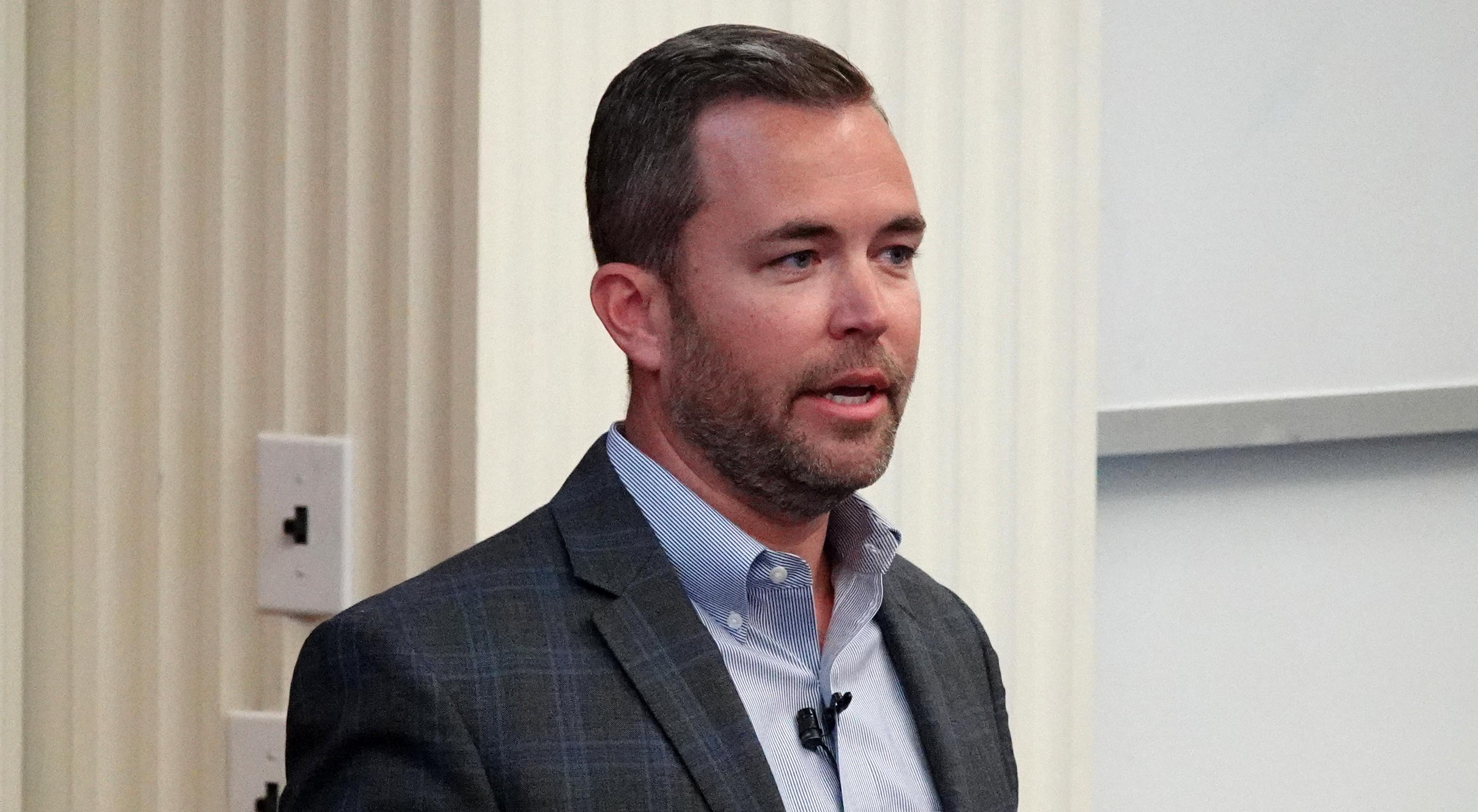Katzfey: Investing in processes helps Dover through global supply chain crisis


The Dover Corporation has been built from acquisition of other companies since it was started more than 60 years ago, and now has 18 brands within the $8 billion company. But Steve Katzfey, Vice President, Global Supply Chain, said that when you have 18 brands in a variety of industries, a global supply chain crisis hits pretty hard.
‘It's been a nightmare,” he noted. “Whether it's toilet paper or medicine or cars or what it's going to be, it seems like everyone's struggling to get everything, and lead times are pushed out.”
Katzfey told students and faculty at his Supply Chain Speaker Series talk on Wednesday that bottlenecks in the transportation process are doubling, tripling, or even quadrupling the transit times for finished goods and components. “You're trying to bring these containers in from the West or East coast, but the rail system can’t absorb it. So they're stacking these containers, sometimes 10 high, and they're doing a LIFO model now because they just can't get to the first containers that came in. So they're doing last in, first out, and some folks are waiting a month to get a container.”
“It's not just COVID, by the way. I think it’s 18 months of challenges, but I'd call it probably 36 months, because before that you had tariffs. We went through Brexit. Now we're going through COVID, and that doesn't even call out the hurricanes and the cold snaps and everything else we're trying to navigate. So it's not going anywhere. We just have to be better prepared for it,” he said.
Katzfey said that while working to navigate the short-term challenges, Dover has been making investments to help the company weather future challenges. “We've modernized and brought to scale a true risk management process and then digitized it into a system. We've invested heavily in our approach to supplier relationship management, both on the process work, as well as the digital system to bring it to life. And then we’ve really focused on our own people and our talent, working with them on continuous improvement and lean principles and being able to engage with our suppliers, drive things to root cause, and eliminate the problems.”
He brought up the example of a company that has been a large supplier for Dover. The risk management process identified the firm as a top risk, so Dover set up an improvement plan while also seeking additional product sources. Dover employees also worked with the supplier to identify the causes of the problem and find solutions. Those actions eliminated half of the risk profile for the supplier, Steve said.
“The biggest goal for us is unifying the function. So it's great to have these processes, it's great to have these systems, but if we can't get every one of those companies and everyone in the supply chain space to use them, we're not operating as an $8 billion company, we're operating as a host of $200, $500, $800 million companies,” Katzfey said. “That's not acceptable for our shareholders, and it's not keeping up with our peers.”
“Those three investments kind of all coming together have improved the process work and how we're working in the supply chain side and our internal supply chain operations. We've also vastly improved how we're engaged with our suppliers,” he said. “We're fixing the things that we can control, and hopefully some day, we'll predict the next hurricane so that we'll be in front of it.”

